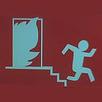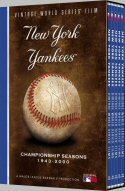|
Larry Mahnken and SG's | ||
|
| Replacement Level Yankees Weblog |

|
|
"Hey, it's free!" | ||
|
Larry Mahnken and SG's | ||
|
| Replacement Level Yankees Weblog |

|
|
"Hey, it's free!" | ||
|
Featuring: Larry Mahnken SG sjohnny TVerik Sean McNally Fabian McNally John Brattain  
The New York Yankees Vintage World Series Films DVD Set, available from A&E. Yankees Tickets World Series Tickets MLB All Star Tickets NFL Tickets Purchase your Onlineseats.com is your #1 source for MLB tickets, NY Mets Tickets, Cubs Tickets, Yankees Tickets, Red Sox Tickets, Giants Tickets, Astros Tickets, Angels Tickets, Phillies Tickets.
Buy all your MLB Tickets,
Laser Keyboard Brazil Flowers TickCo.com for premium New York Yankees Tickets Boston Red Sox Tickets Chicago white Sox Tickets A's Tickets Angels Tickets New York Mets Tickets St Louis Cardinals Tickets Cubs Tickets Dodgers Tickets Worldticketshop Football Tickets Concert Tickets Tennis Tickets Rugby Tickets Formula 1 Tickets "I'm not a pessimist, I'm an optimist. Things are really worse than I say they are." - Steve South

04/01/2003 - 04/30/2003 05/01/2003 - 05/31/2003 06/01/2003 - 06/30/2003 07/01/2003 - 07/31/2003 08/01/2003 - 08/31/2003 09/01/2003 - 09/30/2003 10/01/2003 - 10/31/2003 11/01/2003 - 11/30/2003 12/01/2003 - 12/31/2003 01/01/2004 - 01/31/2004 02/01/2004 - 02/29/2004 03/01/2004 - 03/31/2004 04/01/2004 - 04/30/2004 05/01/2004 - 05/31/2004 06/01/2004 - 06/30/2004 07/01/2004 - 07/31/2004 08/01/2004 - 08/31/2004 09/01/2004 - 09/30/2004 10/01/2004 - 10/31/2004 11/01/2004 - 11/30/2004 12/01/2004 - 12/31/2004 01/01/2005 - 01/31/2005 02/01/2005 - 02/28/2005 03/01/2005 - 03/31/2005 04/01/2005 - 04/30/2005 05/01/2005 - 05/31/2005 06/01/2005 - 06/30/2005 07/01/2005 - 07/31/2005 08/01/2005 - 08/31/2005 09/01/2005 - 09/30/2005 10/01/2005 - 10/31/2005 11/01/2005 - 11/30/2005 12/01/2005 - 12/31/2005 01/01/2006 - 01/31/2006 02/01/2006 - 02/28/2006 03/01/2006 - 03/31/2006 04/01/2006 - 04/30/2006 05/01/2006 - 05/31/2006 06/01/2006 - 06/30/2006 07/01/2006 - 07/31/2006 08/01/2006 - 08/31/2006 09/01/2006 - 09/30/2006 10/01/2006 - 10/31/2006 LINKS Yankees Sites and Columnists Nomaas.org General Baseball Sites & Columnists Rotoauthority.com The Book Blog - Playing the Percentages in Baseball(Tango, MGL, Dolphin) Yankees Blogs Almost Perfect Baby Bombers Baseball Mania Bronx Banter Dugout News Eephus Pitch Fire Joe Torre Blog Here Comes Number 27 High and Tight Lohud Yankees Blog No Sense Worrying Soft Hands The Sporting Brews The Stat Boy of the Empire Was Watching Yankees Chick Yankees Fans in Foreign Lands Yanks Blog Look what people have to say about Larry Mahnken's commentary! "Larry, can you be any more of a Yankee apologist?.... Just look past your Yankee myopia and try some objectivity." "Mr. Mahnken is enlightened."
"Wow, Larry. You've produced 25% of the comments on this thread and
said nothing meaningful. That's impressive, even for you."
"After reading all your postings and daily weblog...I believe you have truly become the Phil Pepe of this generation. Now this is not necessarily a good thing."
"you blog sucks, it reeds as it was written by the queer son of mike lupica and roids clemens. i could write a better column by letting a monkey fuk a typewriter. i dont need no 181 million dollar team to write a blog fukkk the spankeees"
"i think his followers have a different sexual preference than most men"
"Boring and predictable."
"Are you the biggest idiot ever?"
"I'm not qualified to write for online media, let alone mainstream
media."
This site is best viewed with a monitor.
|
Disclaimer: If you think this is the official website of the New York Yankees, you're an idiot. Go away. Monday, January 31, 2005
The birth of a Hall of Famer by SG
This is part 1 of a collaborative three part retrospective on the career of Randy Johnson. Erik will be writing part 2 and sjohnny will be writing part 3.
Saturday, January 29, 2005
100 Diamond Mind Sims with ZiPS projections by SG
The last couple of seasons, I've been running 100 simulations of Diamond Mind Baseball using various projection disks. Although projections are not always valid, I find these interesting, just to see the shape of expectations for all teams if people perform as expected. I don't read too much into these results, because they don't account for injuries, over/under performance, or roster changes, but it's a good way to kill time waiting for the season to start. Diamond Mind does have injuries, but they vary from season to season.
Thursday, January 27, 2005
Yanks to add an outfielder by SG
The thought of Bernie Williams as the every day CF has obviously distressed many Yankee fans. According to the article linked above:
THIS IS A BASEBALL SITE by Larry Mahnken
I think some of my friends with the keys here are afraid to write right now because they don't want to push the fire news off the top of the page.
Tuesday, January 25, 2005
A Message from Larry's Dad by SG
Larry's dad asked me to post this message on the blog.
Monday, January 24, 2005
by Larry Mahnken
My apartment burned down at about 2am this morning. I'm currently homeless.
Tuesday, January 18, 2005
What will Jason Do? by SG
As spring training approaches, the Yankee roster appears to be set for the most part.
Wednesday, January 12, 2005
Bernie, Jaret, and Carl by SG
The Yankees not getting Carlos Beltran was obviously a surprise to most. In a Newsday article titled They wanted arms first, Beltran second, there is some explanation as to why the Yankees felt Beltran was not a fit.
Thursday, January 06, 2005
The Trade by Sean McNally
News broke today that the Yankees and DBacks finally completed (pending physicals) the long awaited exiling of Javier Vazquez to the desert... oh, and Randy Johnson's a Yankee now too.
Tuesday, January 04, 2005
The Hardball Times: A Series of Ridiculously Stupid Events by Larry Mahnken
What a waste of money.
Monday, January 03, 2005
Yanks Don't Want Beltran? Now That's Big by SG
According to Murray Chass in the article linked above, Carlos Beltran may not be in the Yankees' plans any longer.
Saturday, January 01, 2005
Predictions For a New Year by Larry Mahnken
1. The Yankees do not sign Carlos Beltran, and play Bernie Williams in center all season
| |||||||||